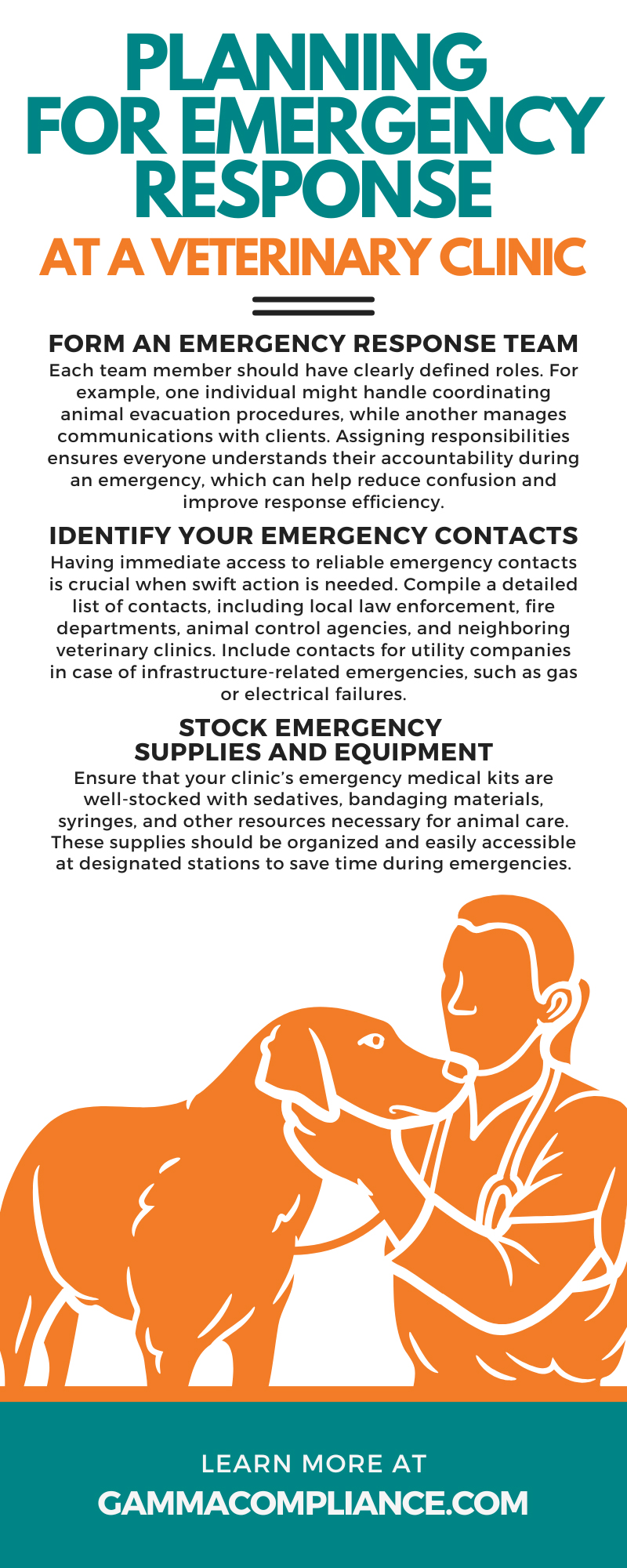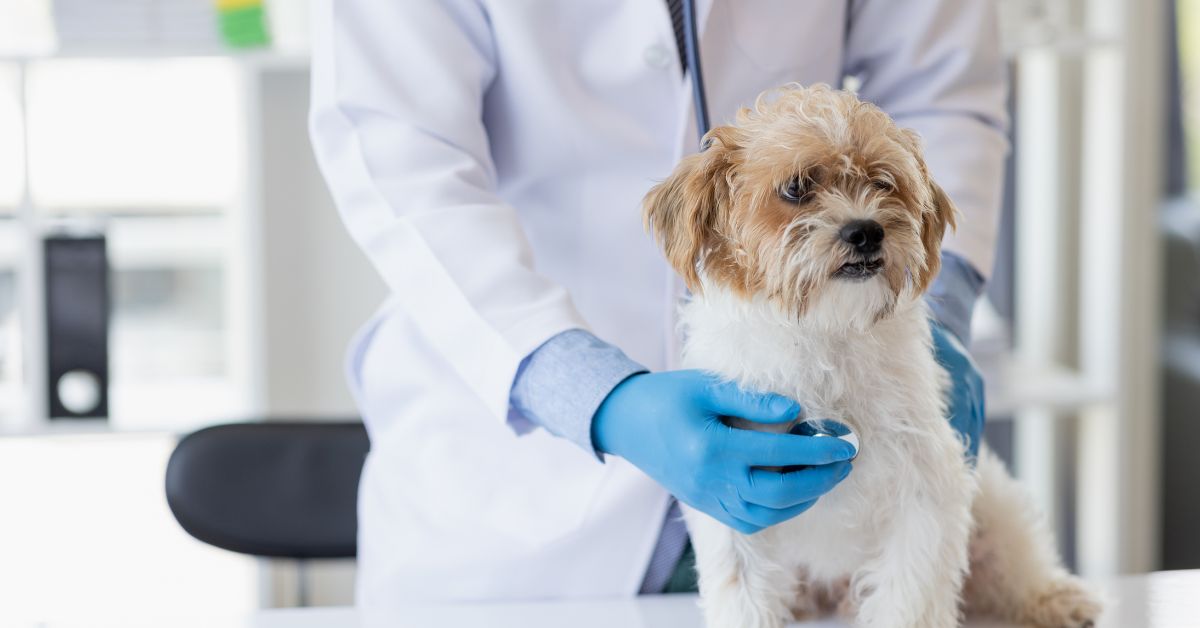Emergency preparedness is a critical aspect of running a veterinary clinic. Whether you’re dealing with natural disasters, medical crises, or unexpected utility outages, being ready for emergencies protects the well-being of your staff, patients, and clients. A well-executed emergency response plan minimizes risks, fosters trust, and helps your team act decisively during critical moments.
This guide provides a step-by-step plan to identify potential threats and prepare your veterinary clinic to respond to emergencies effectively. By addressing risks, forming a response team, complying with regulations, and following key emergency guidelines, you can ensure the safety and continuity of your operations.
Identifying Potential Veterinary Clinic Emergencies
The first step is identifying the potential emergencies specific to your clinic. Common emergencies may include natural disasters such as floods, fires, or earthquakes. Internal incidents such as chemical spills or equipment failure can also constitute emergencies.
Additionally, consider emergencies that involve animals. For example, unanticipated patient complications, aggressive behavior during exams, or dangerous wildlife encounters are all common risks vets may face. Understanding the unique risks your location and practice face enables you to focus on preparing for relevant scenarios rather than adopting a generic approach.
Determine and Minimize Risks
Once you’ve identified the potential emergencies your practice may face, the next step is to assess the risks they pose. Risks might include fire hazards from electrical equipment, zoonotic disease outbreaks, or even dangerous encounters with uncooperative animals during stressful events.
To minimize the potential impact of these risks, implement preventive measures. For instance, regularly maintain electrical systems to reduce fire risks and establish proper handling protocols for biohazards. Recognize vulnerabilities and act proactively to address them before they escalate into emergencies.
Form an Emergency Response Team
An emergency response plan is only as effective as the team executing it. Identify key individuals who will form your clinic’s emergency response team. These are typically clinic managers, veterinarians, technicians, and other essential personnel who can lead emergency efforts during a crisis.
Each team member should have clearly defined roles. For example, one individual might handle coordinating animal evacuation procedures, while another manages communications with clients. Assigning responsibilities ensures everyone understands their accountability during an emergency, which can help reduce confusion and improve response efficiency.
Identify Your Emergency Contacts
Having immediate access to reliable emergency contacts is crucial when swift action is needed. Compile a detailed list of contacts, including local law enforcement, fire departments, animal control agencies, and neighboring veterinary clinics. Include contacts for utility companies in case of infrastructure-related emergencies, such as gas or electrical failures.
Internal contacts should also be part of your list. All staff members should know who to contact within your clinic for quick decision-making and further guidance during an emergency situation.
Create an Emergency Plan
A robust emergency plan serves as the foundation of your preparation efforts. This plan should detail procedures for various scenarios, such as fire evacuations, animal rescues, or hazardous material clean-ups. Ensure the plan includes clear instructions that employees can follow in real-time.
For example, fire plans should label evacuation routes and safe locations to meet outside the building. Hazardous material cleanup should detail the materials, tools, and PPE involved in handling and disposal of waste.
The plan must address safety protocols for staff and patients. Animal handling is especially critical. Clearly outline preparing transport cages and assigning personnel to manage patients during evacuations. Regularly review and update the plan to reflect operational or structural changes at your clinic.
Stock Emergency Supplies and Equipment
Emergency supplies enable quick responses to any crisis. Clinics should maintain a dedicated inventory of items such as first-aid kits, transport carriers, fire extinguishers, flashlights, batteries, and biohazard disposal materials.
Ensure that your clinic’s emergency medical kits are well-stocked with sedatives, bandaging materials, syringes, and other resources necessary for animal care. These supplies should be organized and easily accessible at designated stations to save time during emergencies.
Practice Emergency Training and Drills
Training equips your staff to respond effectively when emergencies occur. Conduct drills to familiarize your team with the emergency plan and ensure they can execute their responsibilities under pressure. Drills should cover various scenarios, from animal evacuations to hazardous material containment.
After each drill, evaluate its effectiveness to identify areas needing improvement. Openly discuss lessons learned with your team, as feedback is invaluable for refining processes and building confidence in their ability to manage emergencies. Training shouldn’t be one and done, either—schedule regular training sessions on a yearly basis to ensure your team is always ready.
Test and Revise Your Plan as Needed
Regular testing ensures your emergency plan remains functional and relevant. Factors such as staff turnover, structural changes in the clinic, or updates to local regulations can make periodic revisions necessary.
Evaluate your plan’s efficiency by simulating different emergency scenarios and tracking the time it takes to respond appropriately. Engage and update all employees in the testing process to ensure everyone is up to date on procedures. Revising your plan keeps your clinic well-prepared to manage evolving challenges.
Ensure Your Emergency Preparations Comply with OSHA Guidelines
Compliance with OSHA (Occupational Safety and Health Administration) standards is of critical importance for veterinary clinics. Regulations often specify requirements for handling hazardous materials, maintaining fire safety, ensuring workplace health standards, and many of the elements that make up an emergency plan. These guidelines protect your employees and the animals in your care.
Make sure your clinic’s emergency response plan aligns with the latest OSHA recommendations. Regular audits can help identify compliance gaps, allowing you to adjust policies and protocols to meet these important standards.
Where To Find OSHA-Compliant Veterinary Training
If you’re unsure how to align your emergency response measures with OSHA standards, seek professional training from reputable sources. Gamma Compliance Solutions offers comprehensive veterinary OSHA compliance programs tailored to clinics. Our courses educate clinic managers and staff about proper safety protocols, including chemical handling, emergency preparedness, and hazard communication. Investing in training equips your team with the skills and knowledge required for effective crisis management.
Prioritizing Staff and Patient Safety
Planning for emergency response is an essential part of managing a veterinary clinic. By identifying risks, maintaining emergency supplies, and engaging your staff in regular training, you can create an environment that prioritizes safety and quick response. Your diligence in planning can mitigate risks while protecting your staff, patients, and business reputation.
To ensure your clinic is fully prepared, browse training resources at Gamma Compliance Solutions today. Taking proactive measures safeguards your operations and shows your clients that their pets’ safety is your top priority.



